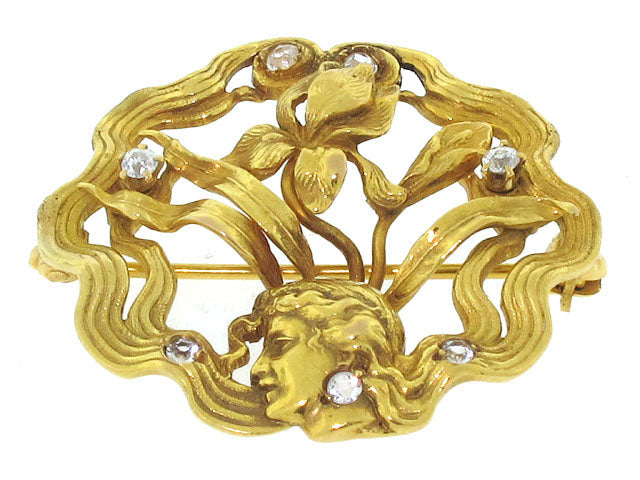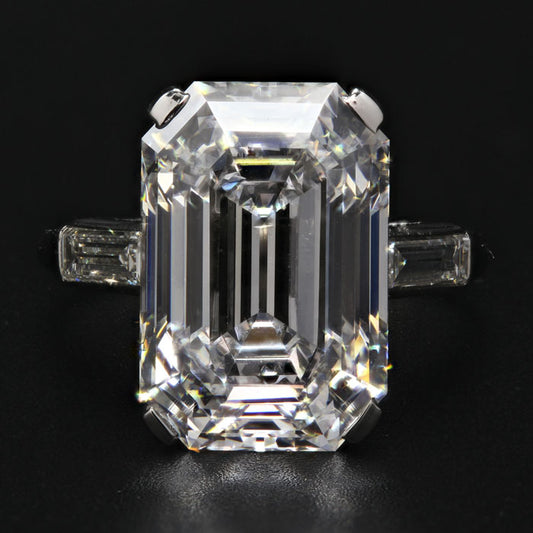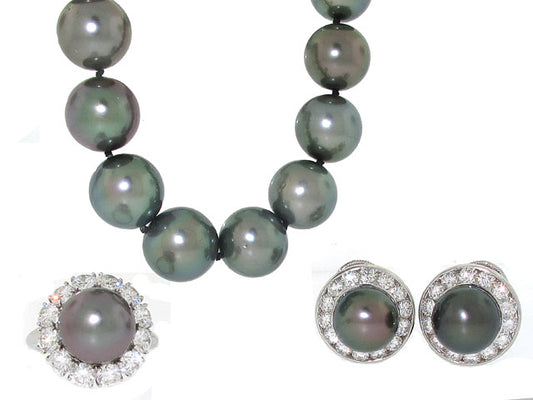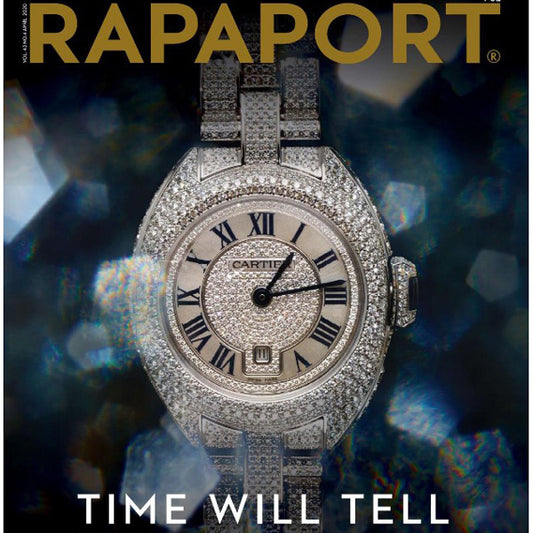The term “Art Nouveau” originated in 1895, when an art gallery in Paris began featuring a new kind of art, “L’Art Nouveau.” The period was relatively brief, spanning less than twenty years, roughly from 1895-1910, but is nonetheless a significant time in the history of jewelry design.
The style of Art Nouveau jewelry comes from a number of different influences. One can be traced back to a group of artists during the mid-1800s who, in reaction to Europe’s preoccupation with botany, took inspiration for their designs from nature and advocated a literal approach to art. Motifs such as orchids, irises, water lilies and trailing vines became common in jewelry produced in the latter half of the nineteenth century. Also important to the Art Nouveau period was the British Arts and Crafts movement during the 1880’s, which championed expert hand-craftsmanship and individual design in opposition to the increased mechanization and standardization of goods taking place during the Industrial Revolution. Impressionism was also influential during the Art Nouveau period, encouraging artists to focus on conveying nature in a sensual and emotionally charged way, as opposed to merely creating a literal interpretation of a flower or animal. But most influential to the Art Nouveau movement was “Japonisme,“ the European fascination with Japanese art and design that first developed in the 1860s following the International Exhibition of 1862. It became a pervading theme in Art Nouveau jewelry in the form of brightly colored enamel, asymmetry and simple, yet elegant motifs.
Insects were a popular motif in Art Nouveau jewelry, especially the butterfly and dragonfly. Snakes, symbolizing life and sexuality also were popular in Art Nouveau jewelry. Birds, in the form of peacocks and swans, were also frequently used, as were landscapes, the female face and body, and mythical creatures such as mermaids, chimeras and dragons. More traditional styles were abandoned in favor of asymmetrical designs and the trademark “whiplash,” free-flowing curve often associated with Art Nouveau designs.
The materials used in Art Nouveau jewelry add to the ethereal feel of the pieces and were largely selected for their artistic merit as opposed to their intrinsic value. Opal was a popular material in Art Nouveau jewelry, producing a soft, glowing, organic look. Also popular were moonstones, ivory, shell, and most importantly, enamel, which could achieve a variety of effects depending on the enameling method employed. Horn was also often used in Art Nouveau jewelry, and could be dyed, carved and stripped into thin, translucent sheets.
Art Nouveau Enamel Jewelry
One technique closely associated with Art Nouveau is the plique à jour technique. The style resembles a stained glass window and is used in jewelry without a backing so that it forms a translucent tableau, making it popular for depicting ephemeral things such as insect wings and water, but this technique is extremely delicate and thus intact pieces are hard to find today.
From the Archive: Omega Antique Art Nouveau Enamel Pocket Watch in 18K Gold
Another enameling technique is the cloisonné technique, in which liquid enamel is poured and separated by fine gold wire and then polished. A third technique found in Art Nouveau enamel jewelry is the basse-taille technique, whereby designs are engraved in metal and then covered with a transparent layer of enamel. Finally, the taille d’ éterge method was also common, which is similar to the technique used in the basse-taille method, but the engravings in the metal are much deeper.
Enamel jewelry is highly collectible as a great deal of skill and craftsmanship was needed to create these beautiful pieces and thus Art Nouveau enamel jewelry is not easily replicated. The artistic merits of the piece, the specific designer’s name and the condition of the item all contribute to determining the value of a piece of Art Nouveau enamel jewelry.
Art Nouveau Brooches
Brooches in the shape of animals and insects were very popular during the Art Nouveau period. Materials such as opal, horn, shell, pearl and enamel were often used in these designs to achieve an iridescent, three-dimensional, organic quality that made the designs more sensual and fluid. Sometimes little springs were attached to the various appendages of these brooches so that they quivered, making the creatures depicted appear even more lifelike. Flowers also often appear in Art Nouveau brooches, often framed by twisting vines, the petals formed from semi-translucent enamel or carved shell, embellished with moonstone dewdrops. The designs of Art Nouveau brooches were often quite complex, the different pieces created separately and later assembled. Another unique characteristic of Art Nouveau brooches is that the back side of the brooches are also often beautifully designed as well.
Antique Art Nouveau Enamel, Diamond and Natural Pearl Brooch/Pendant in 14K Gold
Brooches, especially those depicting insects and animals, have recently made a popular comeback. They can be worn traditionally on a collar or lapel, or to decorate a scarf, handbag or belt. Brooches can even be worn in the hair or strung around a chain and worn as a pendant. What makes Art Nouveau brooches so special is that the jewelers of the Art Nouveau period were true artists and their creations are nothing less than remarkable works of art.
As a decorative style Art Nouveau can be observed in architecture, furniture, accessories and jewelry. Asian art was especially influential with its free flowing asymmetrical lines, naturalistic designs, and enameling techniques. The Arts and Crafts movement was also influential with its emphasis on hand-craftsmanship and artisanship.
Antique Art Nouveau Amethyst Lorgnette in 18K Gold
Art Nouveau design encompassed many distinct features including a focus on the female form and on nature. Common motifs included orchids, irises, pansies, vines, swans, peacocks, snakes, dragonflies and the female silhouette. Another common motif was mythological creatures, such as the griffin or chimera. There was also an emphasis on color in jewelry of the period, most commonly rendered through the use of various enameling techniques including basse-taille, champlevé, cloisonné and plique à jour.
The sensuous, exotic and expressionistic designs of the Art Nouveau Period, particularly in jewelry designed by Rene Lalique and Lucien Gautrait make these pieces highly sought after by collectors.











